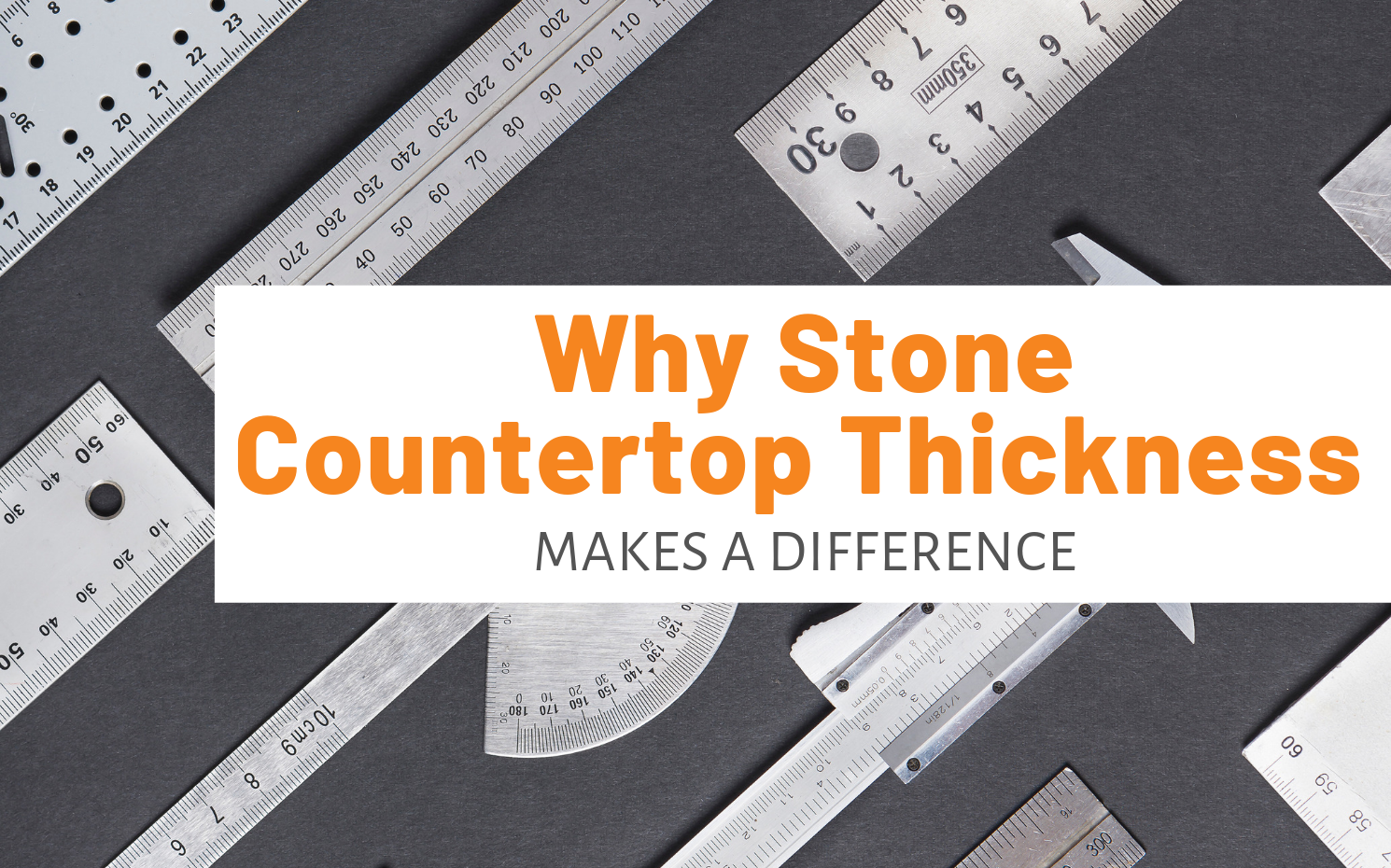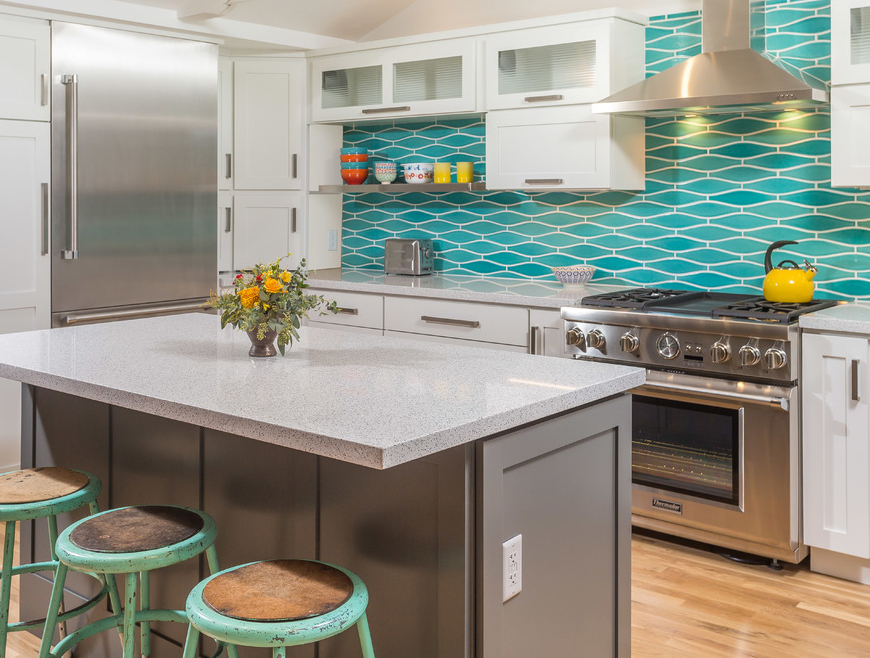Every stone countertop has a story behind it—including the history of the rock’s formation (and any plant and animal life that was involved in that process, too) Still, in the more recent past, each countertop’s “story” is, in part, a product of the decisions that we make about how it should look, from type of natural stone to type of countertop edging to finish on the slab’s surface. Stone countertop thickness is yet another element that combines with these others to make your countertop a unique part of your kitchen.

Let’s start with two primary questions to answer as you choose what stone countertop thickness you want: What do I want the finished project to look like? and How much do I want to spend?
The aesthetics of stone countertop thickness
Varying the thickness of your stone countertop can help you achieve different looks for the area you’re creating. What thickness you choose depends in part on your own preferences—what looks good to you and what you think supports your design and decor.
To understand some of this variation, take a look at the thickness of this elegant slab—a statement piece in its Houston kitchen. Contrast it with the countertop on this DC Metro kitchen’s island. Thinner perhaps, but no less beautiful in its environment.
Perhaps you’ll opt to go as thick as you can for a solid, satisfying appearance. Or maybe you’ll create minimalist appeal with a thin “slice” of countertop. Whatever you choose, think of your stone countertop thickness as one design element that’s just waiting to help you cultivate the appearance you’re looking for.
Price
We know that stone countertop thickness can help you achieve the desired appearance. But, another impact of your stone countertop thickness choices is the impact on your wallet. It’s another consideration you should bring to your countertop decision-making.
You may find that thinner slabs tend to require you to shell out less money. And this makes sense because, obviously, the thinner the slab, the less product you’re getting. When it comes to price, check with your countertop specialist how countertop thickness might affect your counter’s price tag.
Visualizing stone countertop thickness
Keep in mind that thin does not equal less beautiful—at least when it comes to appearance. In fact, slim countertops can look great. Don’t just take our word for it—check out the beauty and slimness of this 1-centimeter granite island.
Level up to 2 cm thickness, and you have stunning options like this splendid striped quartzite or this marble countertop in Denver. Thickening the granite still further we find the 3 cm mark. And there’s showstopping beauty at that size, too. For instance, take a look at this Miami kitchen with its quartz counters.
Where is your countertop being installed?
Another factor to consider when choosing countertop thickness is where your countertop is going. You may choose thinner countertops for some areas of the house than for others. For instance, your bathroom countertops may be slimmer than your kitchen countertops.
Also, within any given area, you may elect to vary the thickness of the different counters. As an example you could choose an island with a very thick slab atop it, yet keep the other counters relatively slimmer. Check out the thick countertop on the island of this Newark kitchen.
A word about stone countertop overhang
Looking for bar stool seating at your island? If you’re planning to have an overhang on your island, check with your countertop specialist to learn how that will affect your stone countertop thickness. Likely, the thicker your countertop, the farther your slab will be able to overhang the cabinets below without support.
Stone countertop thickness—how thick it looks vs. how thick it actually is
It’s interesting to note that how thick a stone countertop appears is not always how thick the entire slab actually is. Some countertops have a thicker rim at the edge. Incidentally, this can be one way to reconcile the appearance you want with the amount of money you have (or rather don’t have) to spend. Selecting a counter where the edges are thicker than the rest of the slab may enable you to get the thick look you want without the price tag of a thicker slab.
Thick or thin—what’s it made of?
Choosing your stone countertop thickness is just one thing to consider when installing new counters. Other things to keep in mind are the material the countertop is made of and the kind of edge you want it to have. When it comes to materials, check out 4 Different Types Of Kitchen Countertops | Pros And Cons.



Recent Comments